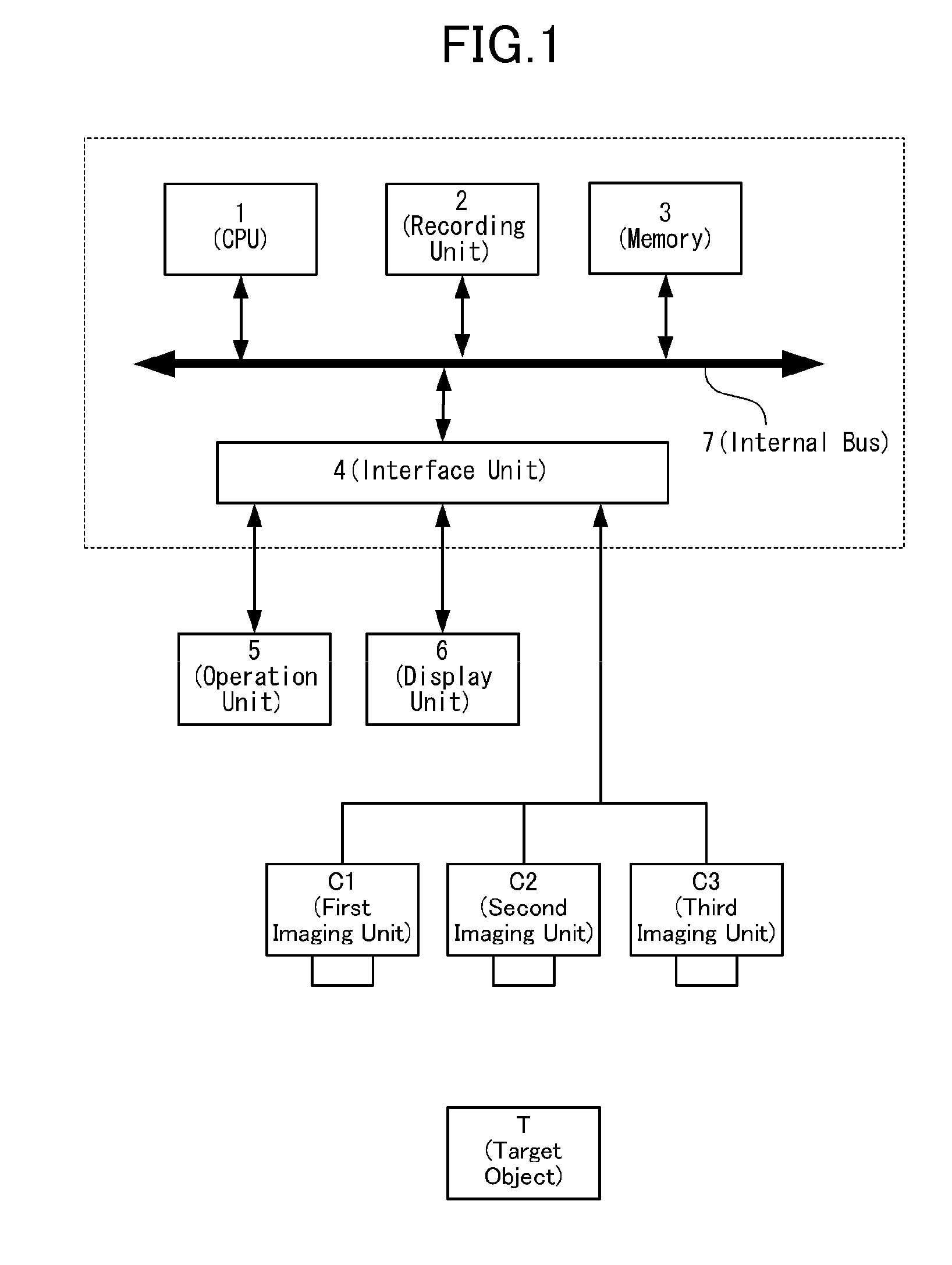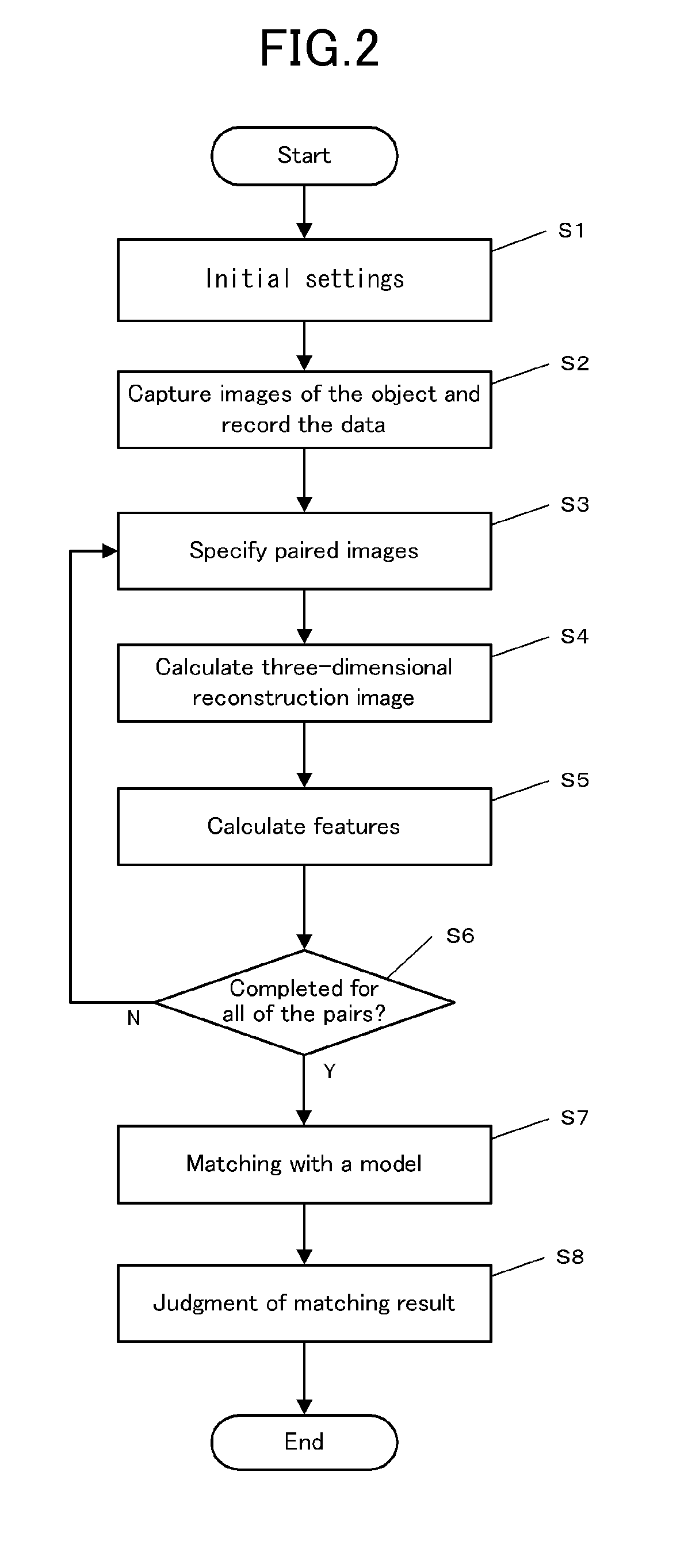Device and process for three-dimensional localization and pose estimation using stereo image, and computer-readable storage medium storing the program thereof
a three-dimensional localization and pose technology, applied in image enhancement, image analysis, instruments, etc., can solve the problems of stereo method having a long-held problem called “occlusion”, measuring incorrect localization and pose, and failing to recognize the target object, etc., to achieve accurate localization and pose estimation, accurate localization and pose recognition
- Summary
- Abstract
- Description
- Claims
- Application Information
AI Technical Summary
Benefits of technology
Problems solved by technology
Method used
Image
Examples
examples
[0124]Examples of the present invention are described below to further clarify the effectiveness of the present invention.
first example
[0125]In First Example, to more easily understand the condition of false stereo correspondence, the measurement was performed using a model having a simple shape. An image of the object shown in FIG. 5 was captured using three cameras as the first to third imaging units, and the obtained image data was processed according to the flow chart shown in FIG. 2.
[0126]The three cameras were arranged such that the second camera was disposed on the right of the first camera with a base length of 25 cm, and the third camera was disposed upward from the center of the first and second cameras at a 6 cm distance.
[0127]As an appropriate target object shown in FIG. 5 to more clearly show the condition of false stereo correspondence, an object having a simple shape, namely, a 40 mm (width)×40 mm (depth)×78 mm (height) rectangular solid with one inclined side was used. The trapezoid shown in the front view has an upper width of 40 mm and a lower width of 30 mm. The rectangular solid was not a comple...
second example
[0136]In First Example, a model having a simple shape was used to more clearly show the condition of false stereo correspondence. For comparison, another experiment was performed using an object having a more complicated shape. The result of this experiment is explained below as Second Example. In Second Example, the measurement was performed using an L-shaped object as a target object, which is a shape closer to a real industrial component, and a structure simple enough to be drawn on a diagram. The L-shaped object had two L-shaped faces and six rectangular faces.
[0137]FIG. 16 is a perspective view showing the shape of the model used in Second Example. The arrows labeled as x, y, z in the vicinity of the center of the model show axes of the model-coordinate system, and “o” indicates its origin. The six arrows with labels (a) to (f) indicate respective viewpoints in each figure of FIGS. 19 and 21 showing the results of the matching experiments.
[0138]FIG. 17 shows trinocular stereo p...
PUM
 Login to View More
Login to View More Abstract
Description
Claims
Application Information
 Login to View More
Login to View More - R&D
- Intellectual Property
- Life Sciences
- Materials
- Tech Scout
- Unparalleled Data Quality
- Higher Quality Content
- 60% Fewer Hallucinations
Browse by: Latest US Patents, China's latest patents, Technical Efficacy Thesaurus, Application Domain, Technology Topic, Popular Technical Reports.
© 2025 PatSnap. All rights reserved.Legal|Privacy policy|Modern Slavery Act Transparency Statement|Sitemap|About US| Contact US: help@patsnap.com



